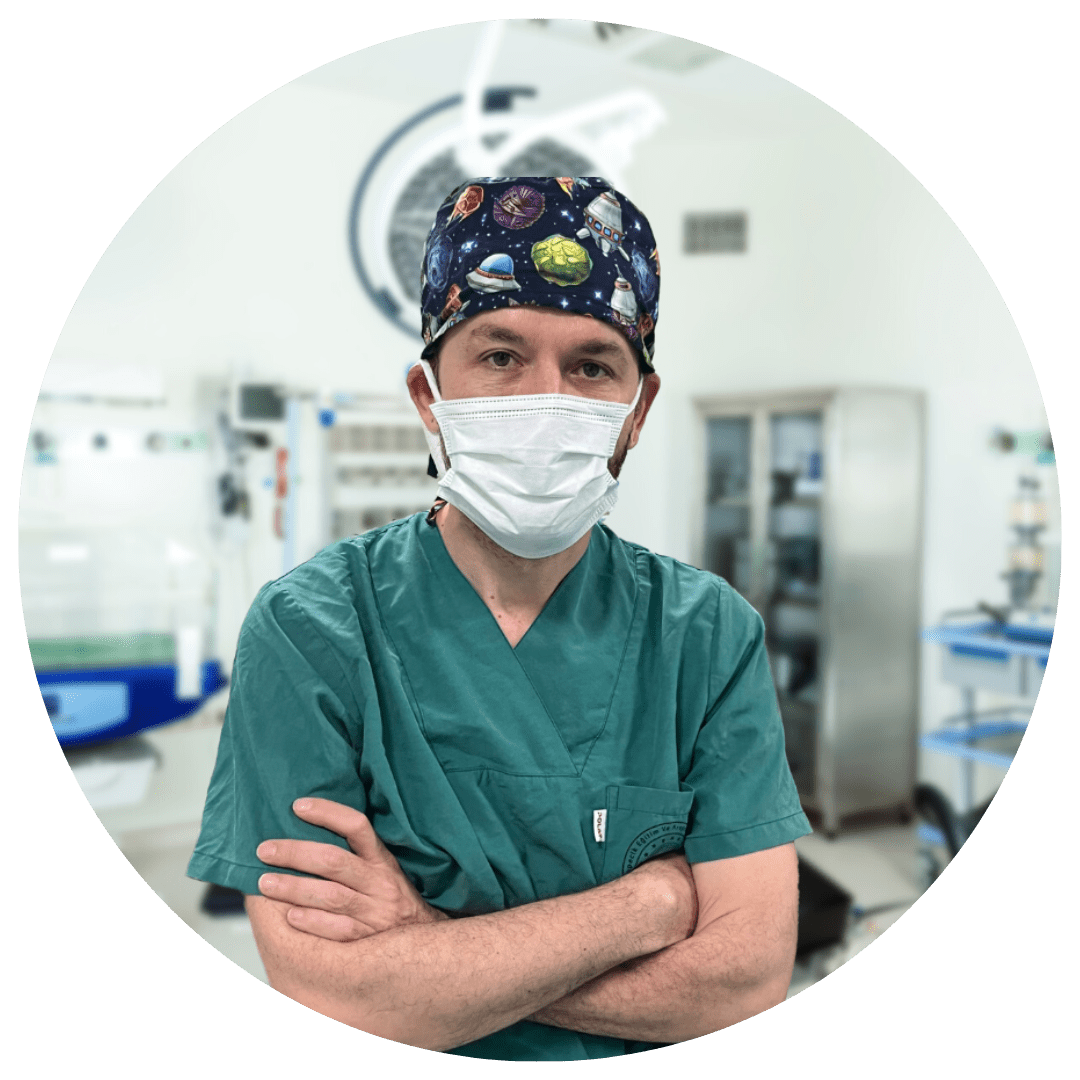- 6 August 2024
- Prof. Dr. Gökhan Koç
- Comment: 0
- Blog
Hydrocele is a condition that causes fluid to accumulate in the scrotum, causing swelling and discomfort. Varicocele is a condition in which the veins in the scrotum expand, causing pain and infertility. A common treatment for this condition is varicocele surgery, but there is a possibility of developing a hydrocele after the surgical procedure. This condition occurs as a result of fluid accumulation in the area where the varicocele was removed. The risk of developing hydrocele can be reduced by using certain surgical techniques, such as microsurgery, and following appropriate postoperative care. Patients should consult their physician with any concerns about this potential complication.
What are the Symptoms of Hydrocele?
Hydrocele is usually painless, but it can cause discomfort and interfere with daily activities. Swelling of the scrotum can create an unpleasant pulling sensation and make it difficult to perform physical tasks such as walking or standing for long periods of time. Additionally, an enlarged scrotum may cause embarrassment or self-consciousness in some people. If a hydrocele becomes large enough, it can put pressure on the testicles and cause pain or discomfort in the scrotum.
In some cases, hydrocele may occur along with other symptoms such as fever, redness or tenderness in the affected area, which may indicate infection or other complications. It is important to seek medical help immediately if any of these symptoms occur. Also, if a person with a history of varicocele surgery experiences swelling or discomfort in the scrotum, this may be a sign of a hydrocele and medical attention should be sought immediately.
How to Treat Hydrocele?
Treatment of hydrocele may depend on the severity of the condition and the person’s overall health. In some cases, if the hydrocele is small and not causing any discomfort, observation may be all that is needed. However, if the swelling causes discomfort or affects quality of life, medical intervention may be necessary.
Aspiration involves removing fluid from the hydrocele using a needle and syringe. This procedure can be done in the doctor’s office and does not require general anesthesia. However, aspiration is a temporary solution and hydrocele may occur again. On the other hand, hydrocele surgery involves surgical removal of the hydrocele sheath. This procedure is more invasive and requires general anesthesia. However, it is a more permanent solution for hydrocele and has a lower risk of recurrence. Ultimately, appropriate treatment for hydrocele will depend on the severity of the condition and the person’s overall health and should be discussed with a healthcare professional.
What are the Risk Factors for Developing Hydrocele After Varicocele Surgery?
Hydrocele is a rare complication of varicocele surgery, but certain factors may increase the risk of developing it. For example, the larger the size of the varicocele, the higher the risk of developing a hydrocele after surgery. Additionally, surgery may also play a role in the development of hydrocele. There is a higher risk of hydrocele development than traditional open surgery, such as minimally invasive laparoscopic surgery or microsurgery. Patients who undergo varicocele surgery should also pay attention to their post-operative care. Exertion, heavy lifting, or excessive physical activity should be avoided during the recovery period to reduce the risk of hydrocele development.
People undergoing varicocele surgery should know the symptoms and signs of hydrocele and report any concerns to their healthcare provider. Early diagnosis and intervention can improve outcomes and prevent complications. In some cases, imaging studies such as ultrasound may be required to accurately diagnose a hydrocele. Healthcare providers can provide guidance on preventing or managing complications after varicocele surgery, such as hydrocele.
How Can Hydrocele Be Prevented?
Although hydrocele is a possible complication of varicocele surgery, certain precautions can be taken to reduce the risk of its development. Minimally invasive surgical techniques, such as microsurgery, have been associated with a lower risk of developing hydrocele than traditional open surgery. Additionally, patients should follow postoperative care instructions provided by their healthcare provider, which avoid straining, heavy lifting, or excessive physical activity during the recovery period. Patients should immediately notify their healthcare provider of any symptoms or concerns.
In some cases, hydrocele may develop despite appropriate precautions. However, early diagnosis and treatment can help manage the condition effectively and reduce the risk of complications. In general, the best way to prevent hydrocele after varicocele surgery is to work with a healthcare provider experienced in managing this condition and follow care recommendations.
References:
https://pubmed.ncbi.nlm.nih.gov/14767329/
https://www.verywellhealth.com/varicocele-surgery-5085385
https://my.clevelandclinic.org/health/treatments/24234-varicocelectomy
https://www.researchgate.net/publication/260380474_Immediate_development_of_post-varicocelectomy_hydrocele_A_case_report_and_review_of_the_literature

Prof. Dr. Gökhan Koç graduated from Gazi University Faculty of Medicine in 2000. After his graduation, he worked as a research assistant in the urology clinic at Tepecik Training and Research Hospital for 5 years and became a specialist doctor in 2007. He currently provides services in urological surgery in İzmir.




